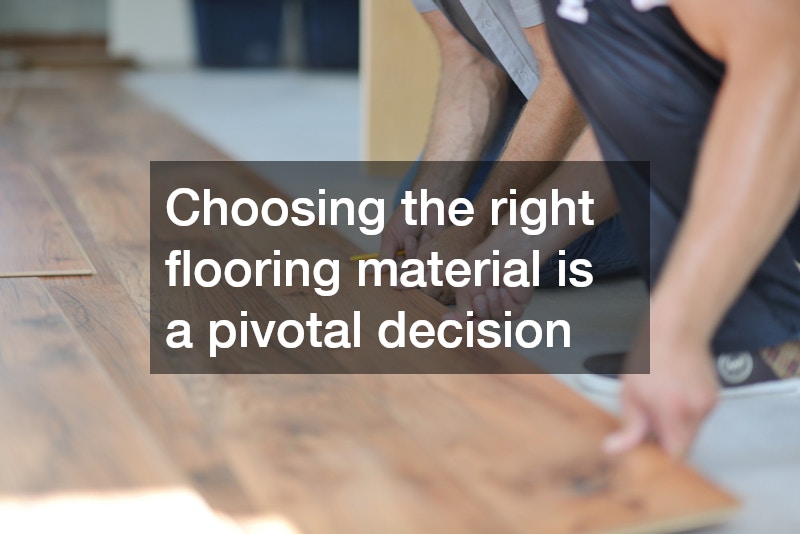The process of floor installation entails much more than merely laying down new materials. For homeowners, understanding what professional installers do before and after the actual installation can provide valuable insights into why hiring pros is a worthwhile investment. Professional floor installation ensures durability, aesthetics, and value addition to your property, making it a key aspect of home improvement. Understand the detailed preparation journey that flooring professionals take to deliver a finished product that is not only visually appealing but also stands the test of time.
What Initial Assessment is Conducted Before Floor Installation?
The first step in any professional floor installation is a comprehensive initial assessment. Professionals start by evaluating the condition of the existing floor. They check for any signs of unevenness, moisture issues, or damage that might affect the new installation. This evaluation helps in foreseeing potential problems and planning the appropriate solutions, ensuring a smooth transition from old to new.
Measurements play a critical role during this initial assessment. Flooring professionals meticulously measure the area to be covered, considering elements like room layout, design patterns, and material waste. Accurate measurements prevent material shortages or excess, ultimately reducing costs. Furthermore, understanding the exact layout of the space ensures that the installation will be both aesthetically pleasing and functionally efficient.
Professionals also take into account factors such as the room’s traffic levels, exposure to sunlight, and ambient conditions. This information is vital in selecting the appropriate materials that will stand up to daily wear and environmental conditions. By assessing these variables early on, professionals can ensure that the flooring solution provided is both practical and tailored to the client’s specific needs.
How Does a Professional Choose the Right Flooring Material?
Choosing the right flooring material is a pivotal decision for any installation project. Professionals consider various factors such as the client’s lifestyle, budget, and the room’s function in this process. Laminate, hardwood, vinyl, and tile each offer different advantages and suit different environments. By working closely with clients, professionals ensure that the chosen material aligns with the homeowner’s vision and practical requirements.
A critical part of this selection process involves evaluating the aesthetics and durability of each flooring option. Flooring professionals have the expertise to match materials with their clients’ design preferences, whether they desire a classic, modern, or rustic look. Moreover, they provide valuable insights into the longevity and maintenance requirements of each type of flooring, helping the client make an informed choice that balances style with practicality.
Flooring professionals also consider environmental and health factors when recommending materials. Many clients today prefer eco-friendly or hypoallergenic options, which align with sustainable practices and promote healthier indoor air quality. By offering options like reclaimed wood or low-VOC vinyl, professionals cater to this growing demand and encourage environmentally responsible choices.
What Tools and Equipment are Essential for Professional Floor Installation?
Quality tools and equipment are essential for a professional floor installation, ensuring precision and efficiency throughout the project. Professionals use a combination of industry-standard and specialty tools, each serving a specific purpose. For instance, saws are integral for cutting materials to fit exact dimensions, while nail guns ensure a secure and seamless installation.
In addition to cutting tools, professionals rely on leveling and measuring equipment such as laser levels and tape measures. These tools guarantee that the installation is perfectly aligned and even, preventing future issues like uneven wear or structural instability. Consistent accuracy is a hallmark of professional installation that significantly enhances the longevity and appearance of the flooring.
For finishing touches, tools like sanders and polishers are used to create a smooth and polished surface. Cleaning equipment is also critical, as it helps remove debris and dust, which can affect the adhesion of new flooring materials. By employing the right tools, professionals deliver a clean, efficient, and lasting flooring solution that meets or exceeds client expectations.
How is the Subfloor Prepared for Installation?
Subfloor preparation is a crucial step that lays the foundation for successful floor installation. Professionals begin by thoroughly cleaning the subfloor to remove dirt, debris, and any existing adhesive residues. A clean surface ensures proper adhesion of the new flooring materials and prevents future bubbling or warping.
Leveling the subfloor is another vital aspect of preparation. Professionals address any irregularities by using leveling compounds or sanding down high spots. This ensures that the floor has a flat surface, which is essential for the new flooring to fit properly and avoid stress points that could lead to cracking or separation.
Moisture control is also a crucial component of subfloor preparation. Professionals may conduct moisture tests and, if necessary, use moisture barriers to protect against potential water damage. This proactive approach prevents mold growth and structural damage, safeguarding the new flooring and extending its life.
The expertise and diligence of a professional flooring installer play a pivotal role in achieving a successful floor installation. From the initial assessment to the final quality checks, every step is meticulously planned and executed to ensure the result is both beautiful and durable. By hiring professionals, homeowners gain access to specialized knowledge, skilled craftsmanship, and quality assurance that are essential for a hassle-free experience. Investing in professional floor installation not only enhances the aesthetic appeal of a home but also adds significant value, making it a worthwhile consideration for all homeowners seeking to upgrade their living space.

